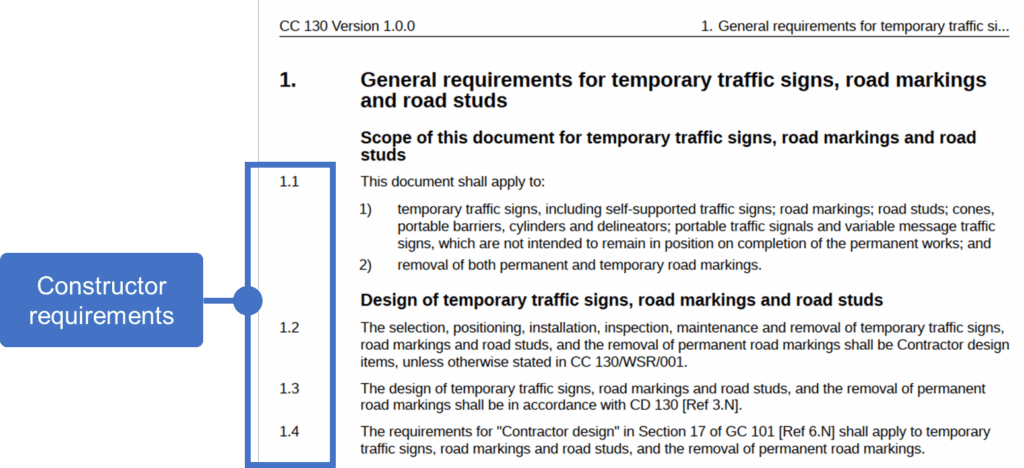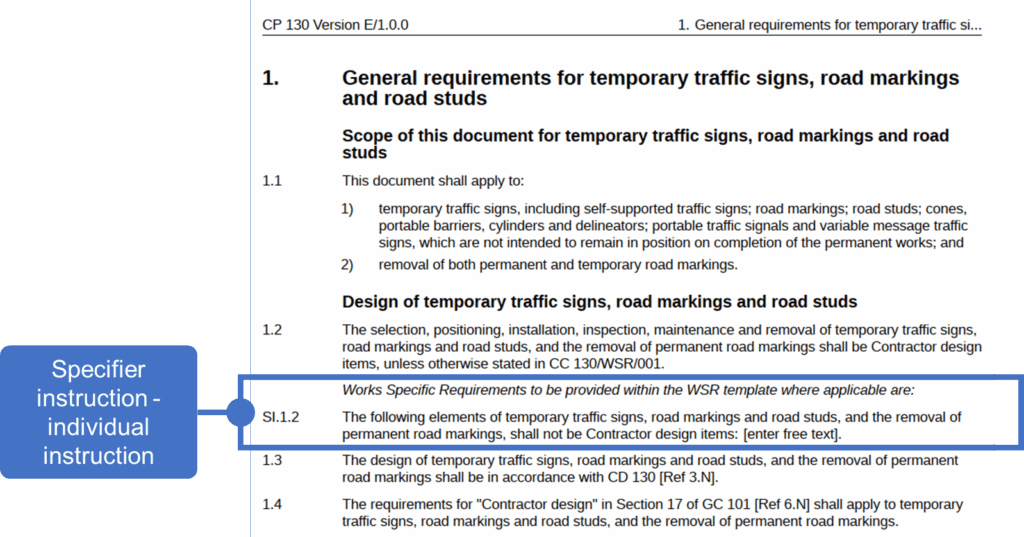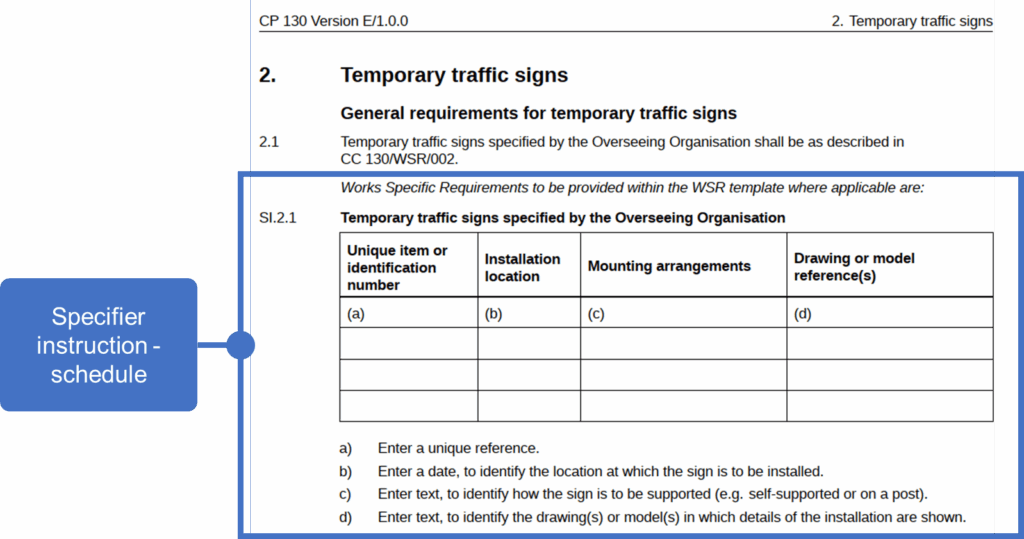Contents
The updated MCHW documents will have a different feel to the old MCHW. This is because they have been redrafted following new drafting rules, supporting a consistent style across the document set as well as improving clarity and removing ambiguity at requirement level.
New SHW content style & format
Clause Style
Each section in the new SHW now applies to a physical object, material, activity or collective term that is the subject of the title. For example, a collective term for “vehicle restraint systems” and “pedestrian restraint systems” is “road restraint systems”. This supports our aspiration of enabling direct mapping between the BIM model/drawing and the specification.
SHW clauses cover constructor requirements, which have been split out, so there will no longer be multiple requirements in the same clause, see Figure 1. The new constructor requirements only cover products, materials and activities related to products and materials such as:
- construction activities required to ensure that products and materials are correctly installed (installation/workmanship requirements);
- verification (including testing and inspection) to prove that products and materials are acceptable;
- documentation to prove that other requirements have been carried out.

Figure 1 – Example of constructor requirements
Back to topVerb forms
A consistent approach to verb forms has been adopted across the MCHW and DMRB. Since the MCHW only covers requirements, the following two verb forms are used:
- Must – indicates a legislative/regulatory requirement
- Shall – indicates a requirement of the Overseeing Organisation
Style of product, installation, documentation and verification requirements
A clear distinction has been made between product and installation requirements, which in turn aids a clearer presentation of documentation and verification requirements. Where appropriate, prescriptive (method-based) requirements have been replaced with performance-based requirements to provide a framework for innovation.
To support clear and unambiguous content, constructor requirements are now presented with consistent patterns whereby requirements treating similar topics (e.g. products covered by designated standards or product acceptance schemes, documentation requirements or contractor designed elements) have got a similar, “standardised” sentence structure.
Back to topManaging design requirements
For individual elements or items of the work where the constructor is employed to conduct the design, reference to the DMRB and other relevant standards has now been made in the SHW. In addition, design requirements previously contained within the SHW, such as details which are typically designed by the constructor, have been moved to the DMRB.
Back to topNew IfS content style & format
Clause style
The content in old Notes for Guidance has changed significantly in terms of structure and presentation. Specifier Instructions are now in line with the SHW requirements and only included where the SHW requirement refers to Works Specific Requirements (WSR) as you can see in the examples in Figure 2.
For ease of use by specifiers, Instructions for Specifiers documents have been published with both:
- the default set of constructor requirements of the SHW and,
- the specifier instructions on providing the required works specific requirements related to the constructor requirements.
The specifier is not expected to adhere to the constructor requirements; these are provided for information only.
Specifier Instructions are provided either as statement clauses (see Figure 2a) or schedules (see Figure 2b).

Figure 2a – Presentation of specifier instructions in the Instructions for Specifiers (IfS) documents – example of individual instruction

Figure 2b – Presentation of specifier instructions in the Instructions for Specifiers (IfS) documents – example of schedule
Back to topNew MMHW Clause Style
The new MMHW documents have been broken up into different documents to align with the relevant SHW documents. They have kept same clause sequence as they had before (units > measurement > itemisation > item coverage), so there are no significant changes made to the clause style.
